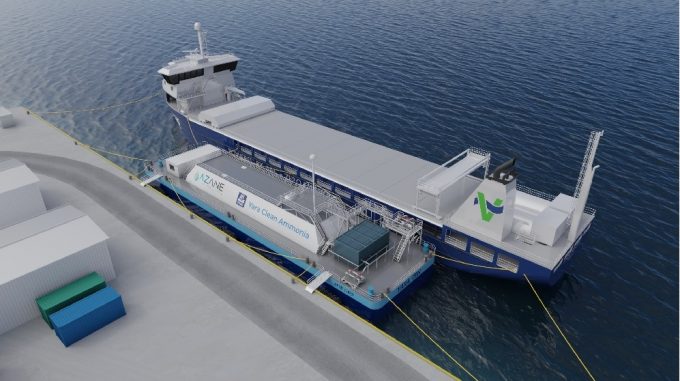Zemba gets things moving, as Hapag-Lloyd signs up for 'greener' shipping
Proving to be more than just idle talk, the Zero-Emission Maritime Buyers’ Alliance (Zemba) has ...

Both Russia and Ukraine are pointing fingers over the rupture in the Tolyatti-Odessa ammonia pipeline, but the noxious gas pouring into the forests of Masyutovka and Kharkiv is only the first of two ammonia-related incidents this week.
In Goa, India, Mormugao Port Authority (MPA) reported an ammonia leakage in the port on Tuesday, with local firefighters racing to contain the gas.
It has not, then, been a good week for ammonia, now regarded as the rival of methanol in the race for mass-adoption of green synthetic fuels. Its main advantage is that it would emit no CO2 from the funnel. Ships powered by ammonia, therefore, will gain an initial PR boost for the companies that operate them.
Grimaldi has ordered some 17 ammonia-ready car carriers, Hoegh Autoliners is awaiting at least eight; Seaspan, alongside the Mærsk Mc-Kinney Møller Center for Zero Carbon Shipping, recently unveiled a 15,000 teu boxship design and the concept is even being pitched for passenger vessels.
And MSC, ever-eager to distinguish itself from 2M alliance partner Maersk, has expressed interest. Announcing a memorandum of understanding with Lloyd’s Register, Shanghai Merchant Ship Design & Research Institute and MAN Energy Solutions last month, its head of newbuilding, Giuseppe Gargiulo, said the carrier would “evaluate if zero-carbon fuels like ammonia can be safely adopted, and the impact they will have on vessel operation”.
But ammonia is a water-seeking chemical that immediately binds to moisture in the eyes, nose and mouth, and is dangerous in concentrations over 100ppm – at concentrations over 1,000ppm, it is immediately lethal.
Gregory Dolan, CEO of the Methanol Institute, said: “The main difference between ammonia and methanol from a safety perspective is the level of toxicity. Crew need to be trained about the physical properties and risks of methanol, but it can be adopted with minimal change and presents an even lower threat to the environment than diesel if spilled.
“Ammonia by contrast is highly toxic, presenting a heightened risk to crew, and requires much more complex safety protocols for transfer, handling and storage. A spill would be difficult to contain and the impact could escalate if it happens in a port or coastal area.”
“A ship sinking with a cargo of ammonia could potentially sterilise cubic miles of ocean,” said Hydrogen Science Coalition co-founder Paul Martin, in a recent report in Recharge News.
What, then, are the implications for an industry which, according to data from insurer Allianz, tends to lose more than 50 large vessels (≥100 gross tonnes) every year?
One loss prevention expert told The Loadstar: “I was on a tanker anchored about two miles downwind from a gas carrier in Lyme Bay in the 1980s. They were venting their tanks, and nearly gassed us.
“We were all struggling with nausea, shortness of breath… there was no hiding from the smell and the taste. Alarm bells rang and we had to contact the coastguard to get them to stop.”
Classification societies like Lloyd’s Register and Bureau Veritas are working to ‘de-risk’ the adoption of ammonia as fuel, which include measures like more stringent leak prevention and onboard vapour gas processing.
But it is still likely that ammonia-fuelled vessels will garner greater scrutiny from insurers, the expert said.
“Underwriters would certainly take a close look at the fuel from a risk perspective – who they are going to insure, what their track record is and what kind of precautions that particular member takes.”
Comment on this article